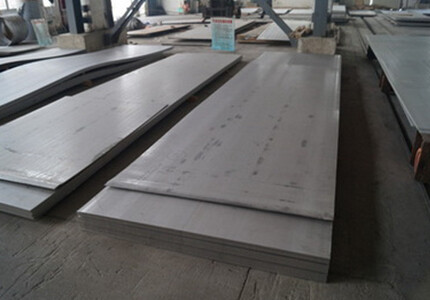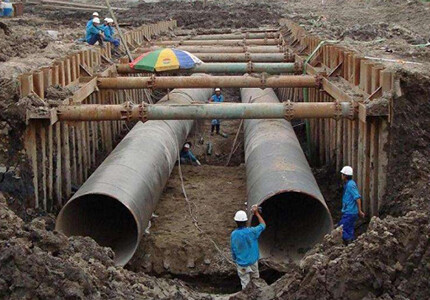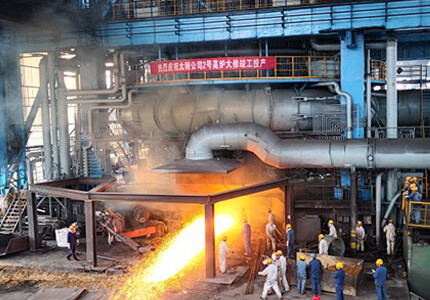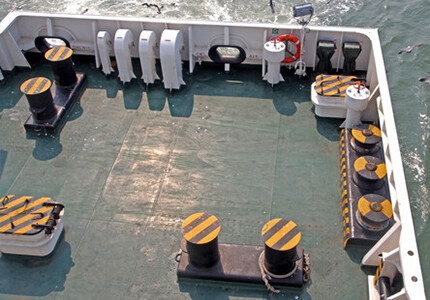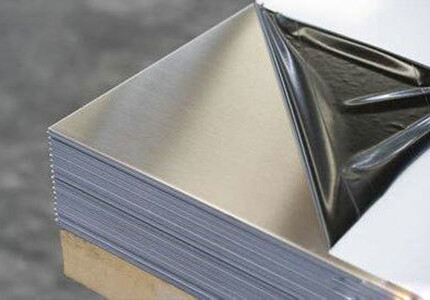
SHOW THE LATEST INDUSTRY INFORMATION
Grasp the latest news of the industry and follow up the update news in real time.
NEW CENTER
Reputation first · win-win cooperation
 Stainless steel plate manufacturers common polishing three methods2024-10-12
Stainless steel plate manufacturers common polishing three methods2024-10-12Stainless steel plate manufacturers common polishing three methods
1, chemical polishing
Chemical polishing is mainly used in some small batches of complex parts and products with low brightness requirements, the main advantage of chemical polishing is that it can effectively polish complex parts, and the efficiency is high, the parts after chemical polishing have better anti-corrosion performance, and the use of chemical polishing for processing equipment investment is relatively less. The disadvantage is that the brightness of the processed parts is not high, and there is gas output in the process, the need for ventilation equipment, and the heating process will produce certain difficulties.
2, electrochemical polishing
Electrochemical polishing is mainly used in some high-grade products and import and export products, the advantage is that the processing process is stable and simple to operate, and electrochemical polishing can make the workpiece mirror to maintain long-term luster. The disadvantage is that the processing equipment investment is large, and a large number of operation processes need to be assisted by cooling facilities.
3, mechanical polishing
At present, mechanical polishing is mainly used for simple parts and small volume products, the advantage is that the flatness after processing is good, and the polishing effect is good, and the brightness is high, but the disadvantage is that the pollution is more serious, it is very labor-intensive, and it can not be polished for complex and high process requirements.
View more Construction and storage method of anticorrosive steel pipe2024-10-12
Construction and storage method of anticorrosive steel pipe2024-10-12(1) Before painting, the surface of the base iron must be treated with Sa2.5 level, and water, dust and oil are strictly prohibited in the construction to ensure the quality of painting.
(2) The coating ratio is: Group A (base material), Group B (curing agent) =9kg paint :1kg curing agent (or according to the proportion of construction told by our factory).
(3) The construction ratio method is as follows: open group A in large sections, add Group B into Group A, and fully stir evenly. Mature for 30 minutes before painting.
(4) This material is required to be used with the matching of the paint must be used within six hours. Unfinished materials should be sealed and stored.
(5) When the relative humidity is greater than 75%, the construction should be stopped. For the parts with serious corrosive media, it is recommended to apply multiple brushes.
(6) The product should be stored in a cool and dry place to prevent direct sunlight, isolate the fire source, and stay away from the heat source.
(7) The storage period is twelve months, and the technical indicators should be tested after the expiration. If the indicators are met, they can continue to be used.
View more On October 09, No. 2 blast furnace was successfully repaired2024-10-09
On October 09, No. 2 blast furnace was successfully repaired2024-10-09The No. 2 blast furnace of Tianjin TISCO carbon steel production line started major maintenance work on August 27, involving more than 1600 maintenance items, including the partial replacement of carbon bricks and cooling walls of the furnace cylinder, the replacement of the furnace top airtight box, and the replacement of the hopper under the groove. In order to ensure the smooth completion of maintenance work, leaders at all levels of our company attach great importance to, carefully organized, set up maintenance leading groups, determine maintenance objectives, coordinate to solve problems, issue maintenance instructions, etc., formulate detailed maintenance plans, require each maintenance project to prepare maintenance schedule, to ensure the maintenance of safety, efficient and orderly progress.
Regularly arrange special personnel for maintenance safety monitoring, supervise the implementation of various maintenance measures, coordinate to solve various problems in the maintenance process, grasp the maintenance dynamics in real time, inform the maintenance progress, strengthen the implementation of safety and environmental protection measures for inspection and maintenance projects, eliminate violations, and prevent safety accidents.
With the joint efforts of all staff, on October 09, the No. 2 blast furnace successfully resumed air. After the completion of the overhaul, the utilization coefficient of the blast furnace will be further improved, the fuel ratio will be greatly reduced, and the blast furnace will continue to operate stably on the high-yield platform, helping the company successfully complete the future production objectives.
View more Understand the commonly used steel plate materials for shipbuilding2024-10-11
Understand the commonly used steel plate materials for shipbuilding2024-10-11The thickness of Marine steel plate is above 20mm
What is the material of Marine steel plate
Planking models AH32, 40 DH32, DH32, DH36, EH32, EH36, etc
AH32 is a Marine steel plate, mainly used in the manufacture of ocean, coastal and inland shipping ships hull, deck, etc. AH32 steel plate belongs to A kind of Marine steel plate, the "A" inside the grade indicates the quality grade of the steel plate, "H" indicates that the steel plate is a high-strength steel plate, and "32" simply and clearly indicates the yield strength of the steel plate. AH32 Marine steel plate has good impact resistance and machinability, and good corrosion resistance. Usually these AH32 steel plates will also carry a front such as BV, AB and other English letters, these letters are short for, indicating the classification society country of the steel plate execution, such as BV/AH32 steel plate is the French classification society standard AH32 Marine steel plate.
The steel plate for shipbuilding must be the same as the classification society of the ship, the steel mill must pass the inspection of the classification society and obtain the product certificate of the classification society, so that the steel plate can be built. The steel plate (ship plate) used in shipbuilding has many types, and in order to improve the utilization rate, the general customized specifications. Models A plate, B plate, A32, A36, D, D32, D36, E, E32, E36 and other types of steel plate.
What is the material of ship steel plate
D36 and DH36 are just different labeling methods of various classification societies, and they are both high-strength Marine steel.
D36 is the US standard, DH36 is the international standard. Marine steel plate refers to the hot-rolled steel plate produced according to the requirements of the classification society construction code for the manufacture of ship structure. Due to the harsh working environment of the ship, the hull hull is subject to chemical corrosion, electrochemical corrosion and corrosion of Marine organisms and microorganisms. The hull is subjected to large wind and wave impact and alternating load. Ship shape makes its processing method complicated and other factors. China Classification Society standard general strength structural steel is divided into: A, B, D, E four quality grades; High strength structural steel has three strength levels and four quality levels: A32 A36 A40 D32 D36 D40 E32 E36 E40 F32 F36 F40, US standard medium and high strength ship plate with "H", Such as AH32, AH36, AH40, DH32, DH36, DH40, EH32, EH36, EH40, FH32, FH36, FH40. Among them, C, D, E grade steel has good low temperature toughness. It can be used in ships, boilers, pressure vessels, oil storage tanks, Bridges, power plant equipment, lifting and transportation machinery and other welding structural parts with higher loads.
View more Take you to know 300 series stainless steel2024-08-15
Take you to know 300 series stainless steel2024-08-15The corrosion resistance of stainless steel depends on the alloying elements contained in the steel. Chromium is the basic element to make stainless steel corrosion resistance, when the chromium content in the steel reaches about 12%, chromium and the oxygen in the corrosive medium, the formation of a thin oxide film on the surface of the steel (self-passivation film), can prevent further corrosion of the steel matrix. In addition to chromium, commonly used alloying elements are nickel, molybdenum, titanium, niobium, copper, nitrogen, etc., to meet the requirements of various uses on the structure and properties of stainless steel.
Stainless steel is usually divided into:
1. Stainless steel, containing 12%-30% chromium. Its corrosion resistance, toughness and weldability increase with the increase of chromium content, and its resistance to chloride stress corrosion is better than other kinds of stainless steel.
2. Austenitic stainless steel, containing more than 18% chromium, also contains about 8% nickel and a small amount of molybdenum, titanium, and other elements. Good overall performance, can resist a variety of media corrosion.
3. Austenite-ferrite duplex stainless steel. It has the advantages of austenitic and ferritic stainless steel and has superplasticity.
4. Martensitic stainless steel. High strength, but poor plasticity and weldability.
300 series stainless steel:
301- Good ductility for molding products. It can also be quickly hardened by machining. welding
Good connection. The wear resistance and fatigue strength are better than 304 stainless steel.
302- Corrosion resistance is the same as 304, and the strength is better because the carbon content is relatively higher
303- By adding a small amount of sulfur, phosphorus to make it easier to cut than 304.
304- General purpose model; 18/8 stainless steel. GB brand 0Cr18Ni9,
309 has better temperature resistance than 304.
316 is the second most widely used steel grade after 304, mainly used in the food industry and surgical equipment, adding molybdenum element to make it obtain a special structure resistant to corrosion. Because it has better resistance to chloride corrosion than 304, it is also used as "Marine steel". SS316 is commonly used in nuclear fuel recovery units.
321- Other properties similar to 304 except that the addition of titanium reduces the risk of corrosion in the weld of the material.
View more


